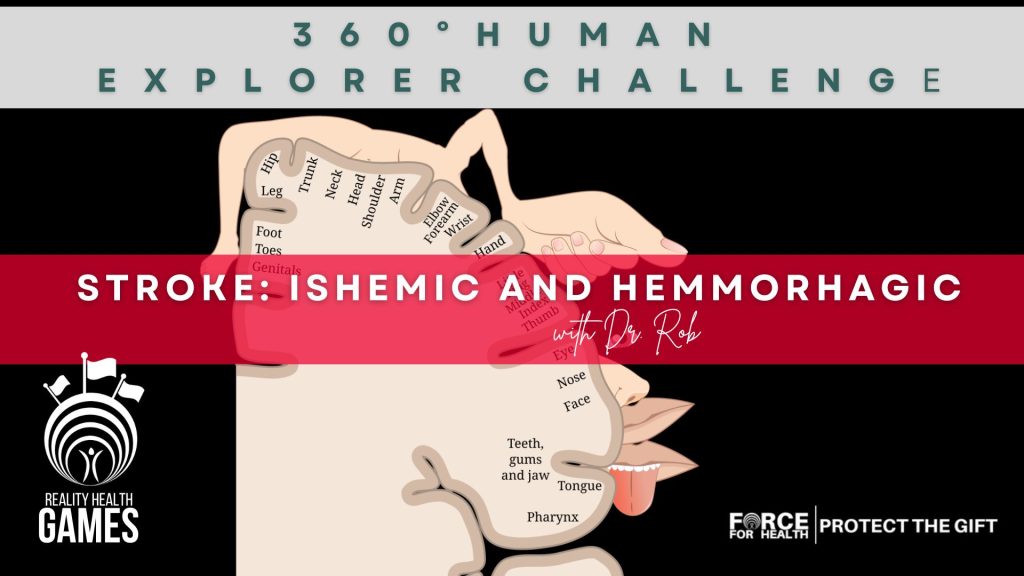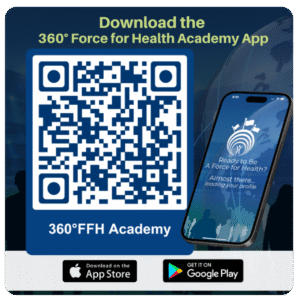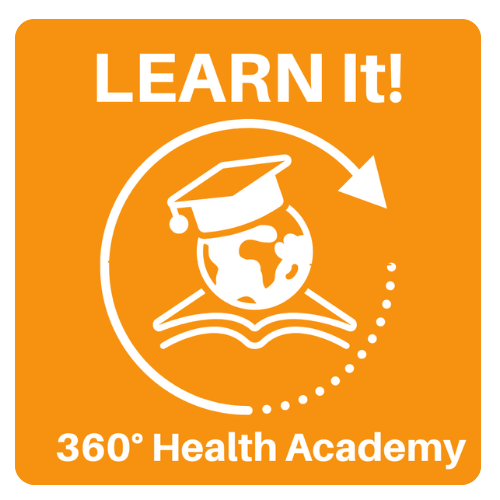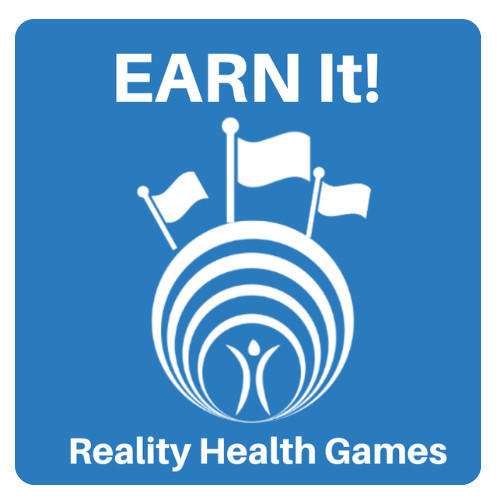
Stroke Awareness with 360 Human Explorer explanation by Dr. Rob
Awareness about strokes is important. Early awareness and intervention can save lives or quality of life.
Think “FAST”
- Face drooping
- Arm weakness
- Speech difficulty
- Time to call 911—Don’t hesitate. It’s a brain attack, and like a heart attack, don’t wait, call 911
Learn it! Let Dr. Rob Explain.
Dr. Rob’s Video Transcript
Stroke Awareness Month
October 2025 is Stroke Awareness Month, and Dr. Rob emphasizes that stroke awareness should be a lifelong commitment. Recognizing the signs early can save a life. Remember the acronym FAST, which helps identify symptoms and guide your next steps.
Understanding FAST
FAST stands for:
- F – Face: Look for facial drooping or an uneven smile.
- A – Arms: Ask the person to raise both arms; if one drifts downward, that’s a warning sign.
- S – Speech: Listen for slurred or confused speech.
- T – Time: Every second counts. Call 911 right away.
A stroke is a brain attack. Acting quickly can prevent long-term damage and even save lives.
Explore the 360 Human Explorer
Inside the Force for Health platform, use the 360 Human Explorer to visualize how strokes affect the brain:
- Open the menu and select Brain and Nerves.
- Search for Ischemic Stroke.
- Explore interactive 3D models to see how blood flow is disrupted.
This tool helps connect what you learn to real human anatomy and physiology.
Ischemic Stroke: Blocked Blood Flow
An ischemic stroke occurs when:
- Plaque builds up in arteries, such as the carotid artery.
- Blood flow slows or stops.
- A clot forms and may travel to the brain, blocking oxygen delivery.
This blockage causes brain tissue death, similar to how a heart attack damages the heart. Ischemic strokes are the most common type.
Hemorrhagic Stroke: Bleeding in the Brain
A hemorrhagic stroke results from:
- A burst blood vessel or aneurysm.
- Pressure from bleeding that damages brain tissue.
- Causes such as high blood pressure, hardened arteries, or trauma.
The Circle of Willis is a frequent site of bleeding. When pressure builds up, brain cells lose their function, which can cause paralysis or loss of consciousness.
The Brain’s Homunculus
The homunculus model shows which brain areas control body parts:
- Precentral gyrus: Controls movement.
- Postcentral gyrus: Controls sensation.
- Broca’s area: Produces speech.
- Wernicke’s area: Understands language.
A stroke in any of these regions can cause weakness, numbness, or speech problems.
Recognizing a Stroke in Real Time
Watch for sudden changes in:
- Face: Uneven smile, drooping eyelid, or one side that doesn’t move.
- Arms: One arm weak or unable to lift.
- Speech: Slurred or broken sentences, or difficulty finding words.
If you see these, act FAST and call 911.
Acting FAST to Save a Life
The faster the response, the better the outcome.
- Face: Droop or uneven smile.
- Arms: Weakness on one side.
- Speech: Trouble speaking.
- Time: Call 911 immediately.
Treatment within the first hour can restore motion and prevent lifelong disability.
Prevention and Proactive Health
To prevent strokes:
- Keep your blood pressure under control.
- Visit your doctor regularly.
- Share what you’ve learned to help others recognize the signs.
Dr. Rob concludes with the Force for Health message:
Learn it. Live it. Share it. Be a Force for Health.
Live It
Challenge:
- Check your own blood pressure this week.
- Practice identifying FAST symptoms with a family member or friend.
- Explore the 360 Human Explorer and locate the carotid arteries and Circle of Willis.
Live it: Explore the 360º Human Explorer
Share It
Action:
- Be an ambassador for prevention in your Force for Health group.
- Post a short message on social media teaching others the FAST acronym.
- Encourage your community to learn stroke signs
- Don’t hesitate to share your knowledge and ACT when you suspect a stroke.









